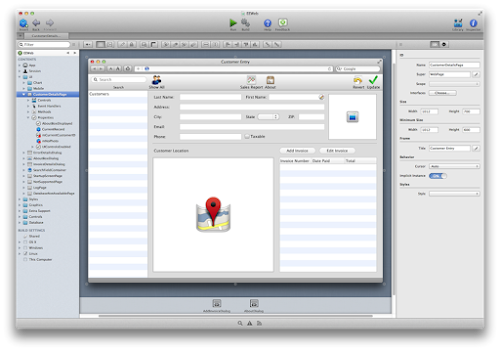Xojo 2016 Release 4 Available;Release Adds Much Anticipated Windows Improvements
Popular cross-platform development tool launches new release with HiDPI support on Windows and hardware accelerated graphics for improved drawing speed.
AUSTIN, TX, USA (December 6, 2016) — Xojo, Inc., the company that has enabled over 315,000 developers to build native cross-platform applications, today announced the availability of Xojo 2016 Release 4. Xojo is a rapid application development tool for making apps for the desktop (macOS, Windows and Linux), web, iOS, and Raspberry Pi. The latest release adds major improvements on Windows, like HiDPI support and hardware accelerated graphics, along with more than 129 total improvements and 9 new features.
“As a cross-platform tools company, we strive to give each platform the attention that it needs and this release focuses on some much anticipated Windows improvements,” commented Geoff Perlman, Founder and CEO of Xojo, Inc. “Users have been building HiDPI apps since the last release, which is now finalized, and this release adds a new, beautiful HiDPI IDE, allowing people with high resolution screens to have the best possible experience. In addition, drawing routines on Windows are now hardware accelerated, providing performance improvements. Intensive drawing routines on Windows can now be up to 280% faster than any previous release!”
Xojo 2016 Release 4 features include:
Windows users can now build HiDPI apps
HiDPI version of the IDE for Windows
Graphics on Windows are now hardware accelerated for improved drawing speed
Faster Xojo Cloud uploading
Xojo Cloud is a one-click web app hosting platform for Xojo applications which boasts ease of use, extreme security and is maintenance-free, so developers can focus on the functionality of their application and not worry about the complicated details of configuring their own server. Unlike most hosting services that come with no additional security, Xojo Cloud comes with industrial-strength security at no additional cost, like an adaptive firewall, intrusion detection, file change detection and Security-Enhanced Linux.
“Xojo and Xojo Cloud combine to enable developers to easily create and rapidly deploy web applications with one-click, while taking advantage of built-in security measures,” added Travis Hill, Engineer at Xojo, Inc. “Xojo Cloud users will see exceptionally better upload speeds in this release. Now the libraries used in the upload are cached so they are not uploaded every single deployment, which should speed up deployment and testing, in some cases by up to 400%.”
A free, time-unlimited trial of Xojo is available from www.xojo.com/download. For information on pricing and licensing options, please visit http://www.xojo.com/store.
About Xojo, Inc.
Xojo, Inc. was founded with the idea that software development should be accessible to anyone. With traditional tools, creating software applications can be a very complicated process, but using Xojo anyone can learn to create high quality, native apps for the desktop, web, mobile and Raspberry Pi. With users all over the world, Xojo apps can be found in every conceivable category - from commercial software applications to use in governments, universities, businesses, and the Fortune 500.







